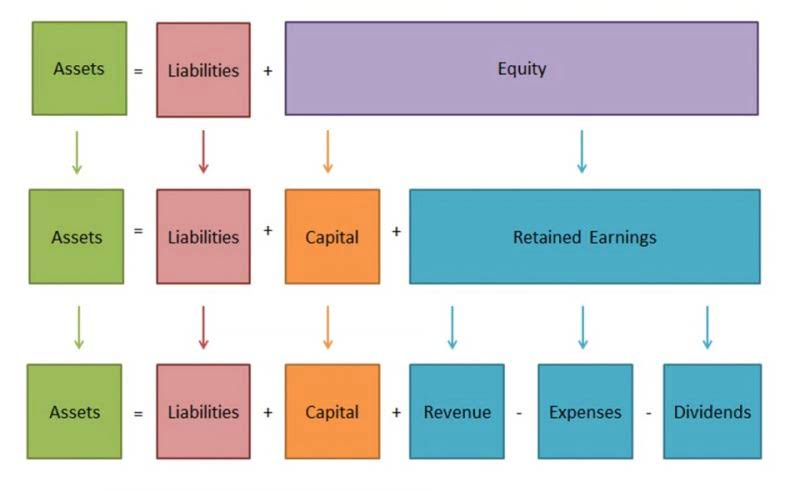
It helps to ensure that all transactions are recorded correctly in the ledger accounts. Balancing T-Accounts also helps to identify any errors or omissions in the bookkeeping process. This process is essential because it helps to ensure that the financial statements are accurate and reliable. T-Accounts play a crucial role in the accounting process by helping to record, analyze, and balance the company’s accounts.
- In the next activity you will balance off the two accounts that we have not yet dealt with, the liability account ‘Pearl Ltd’ and the capital account.
- Using the rules above, all of the other accounts in Edgar Edwards’ general ledger accounts can now be balanced off.
- Two entries (hence, double entry), one on the left and one on the right, so everything is good.
- With that being said, the five most common types of accounts in financial accounting are assets, liabilities, expenses, revenue, and owner’s equity.
- The standard T-account structure starts with the heading including the account name.
- The “Balance b/f” indicates that the debit side is greater than the credit side by $19,100, and that we have $19,100 in our bank account at the end of May (the closing balance of the account).
Fees and expenses

Since so many transactions are posted at once, it can be difficult post them all. In order to keep track of transactions, I like to number each journal entry as its debit and credit is added to the T-accounts. This way you can trace each balance back to the journal entry in the general journal if you have any questions later in the accounting cycle. Understanding Accounting Periods and Methods how to create T-Accounts for Owner’s Equity is an essential aspect of accounting. By following the steps outlined above, you can ensure that your financial statements are accurate and up to date, and that you have a clear understanding of the owner’s investment in the business.
- This is all going to help when looking at a T account if you remember the phrase dealer.
- Overall, creating T-Accounts for liabilities is an effective way to visually organize and record financial obligations.
- It breaks down assets, liabilities, and equity into a clear snapshot of what your business owns, owes, and retains.
- By following the above key points and practicing regularly, you can master the art of recording transactions in T-Accounts.
- For example, all of the equipment transactions may roll up into an account called Property, Plant & Equipment (“PP&E”) on the balance sheet.
- Because T accounts are posted into the General Ledger of a business, they’re also commonly recognized as ledger accounts.
Keeping your Debits and Credits Straight in T Accounts
- But even if you earned less than $10 and don’t receive a 1099-INT, you still need to report the interest as income.Even if you don’t withdraw the interest, it is still considered taxable.
- This means that a business that receives cash, for example, will debit the asset account, but will credit the account if it pays out cash.
- Since so many transactions are posted at once, it can be difficult post them all.
- Electronic Funds Transfer (EFT) has revolutionized the way financial transactions are conducted.
- If the books don’t balance, then something is wrong, and they need to go find it.
- Some accounts have a debit-side balance, while others have a credit-side balance.
What we have just done is balance the money that has gone in and out of the business, adjusted it to account for the opening balance and ended up with a closing balance. A business owner can also use T-accounts to extract information, such as the nature of a transaction that occurred on a particular day or the balance and movements of each account. Below is a short video that will help explain how T Accounts are used to keep track of revenues and expenses on the income statement. Now these ledgers can be used to create an unadjusted trial balance in the next step of the accounting cycle. We do not make any further entries to work out the closing balance – the $4,000 balance is self-evident from the single entry. So, we have our opening balance (debit) of $4,300 and our closing balance (debit) of $19,100.

LendingClub LevelUp Savings Account

Each T account carries the debit and credit entries for a different type of account, such as accounts receivable, cash, sales revenue, and so on. Prepared after closing temporary accounts (like revenue and expenses), it features only permanent accounts, such as assets, liabilities, and equity. Double-entry accounting is a method of recording every transaction twice to ensure that nothing is missed. Every transaction has two equal parts, a debit one and a credit one. The double-entry system helps prevent errors, while the T accounts can be logically ordered to make it easy to find specific transactions quickly. T Accounts allows businesses that use double entry to distinguish easily between those debits and credits.
- Liabilities, Owner’s Equity and Revenue act in the opposite of them.
- The general ledger is an accounting report that sorts and records a business’ financial transactions, by account.
- And if you’re new to the accounting world and have little knowledge in finance, T accounts can be especially useful in working through complex financial transactions.
- If that’s not the case, make sure to double-check your books as you’ve probably made an accounting error along the way.
- In accounting, however, debits and credits refer to completely different things.
- A double entry system is a detailed bookkeeping process where every entry has an additional corresponding entry to a different account.
Using T-Accounts to record transactions is a fundamental skill in accounting. It provides a clear and organized way of recording transactions and makes it easier to prepare financial statements. By following the above key points and practicing regularly, you Restaurant Cash Flow Management can master the art of recording transactions in T-Accounts.

#1 – General Ledger
It is called the T-account because bookkeeping entries are shown in a way that resembles the shape of the alphabet T. It depicts credits graphically on the right side and debits on the left side. Each example of the T-account states the topic, the relevant reasons, and additional comments as needed. However, since debits and credits are entered at the same time, these kinds of mistakes can be easier to catch if the accountant checks his numbers after every journal entry. When starting out in accounting, T accounts can help you make sense of transactions in an account. It is one of the best ways to keep debits and credits straight, visually.

T accounts: Tackling Trial Balance with T Accounts: A Visual Approach
For different account types, a debit and a credit may increase or decrease the account value. A T account ledger is an informal t accounts way of addressing a double-entry bookkeeping system. On the top, the name of the ledger is mentioned, the left side is for debit entries, and the right side is for credit entries within the ledger. It is essentially a visual or graphical representation of the company’s accounts which can be used to present, scrutinize, or review. T accounts help people understand how money moves in and out of an account.
